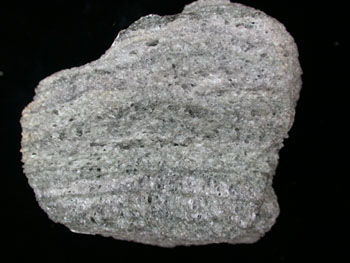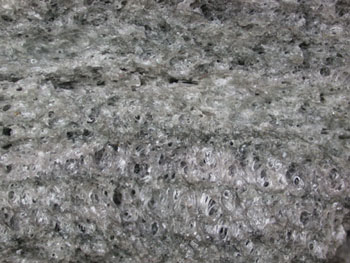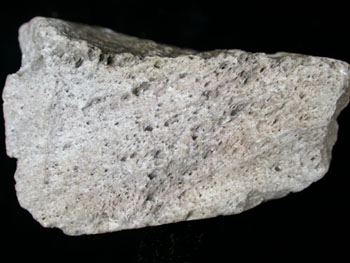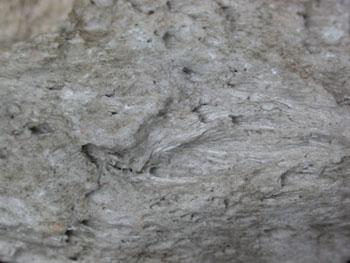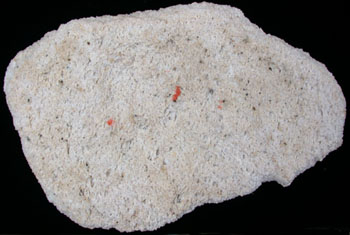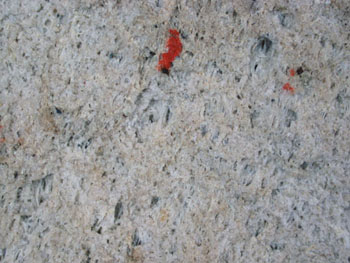
|
| Scoria and pumice take vesiculation to the extreme. Scoria is an extremely vesicular basaltic lava with very small (< 1mm) vesicles. You can find scoria all over North America: The red variety of scoria (it also comes in black) is commonly used as landscaping pebbles at Taco Bell. Landscapers know this rock as lava rock.
Pumice is a froth of felsic volcanic glass. It is rock foam with so much air in its structure that it often floats on water. Close examination of fresh pumice shows its glassy nature. Older, weathered pumice looses its glassy appearance (volcanic glass rapidly breaks down when exposed to water), but it is still lightweight and feels abrasive against the skin. |
Go back to Igneous Rocks page
Return Home
|
|
|

